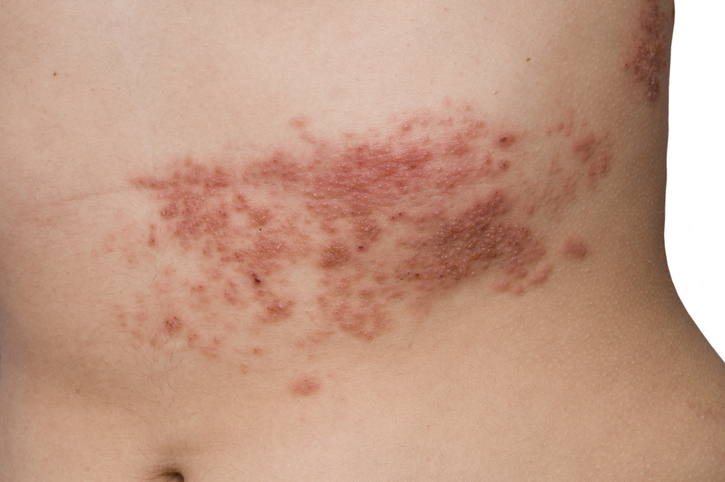Pain
What Is Shingles?

What is shingles?
Shingles is a viral infection which presents as blisters or a rash, normally on one side of the body. Individuals who have had chickenpox are at risk for developing shingles. Both shingles and chickenpox are caused by the varicella-zoster virus. The virus lies dormant in nerve tissue near the spinal cord and brain in people who have had chickenpox. If the virus reactivates, it travels along nerve fibers to the skin and is referred to as shingles. The rash associated with shingles is usually extremely painful.
Although shingles is not typically life-threatening, it can be dangerous. Shingles is contagious through direct contact with the open sores. Individuals experiencing shingles should avoid pregnant women, newborns and people with weakened immune systems.
Symptoms of shingles
Pain is normally experienced before the outbreak of a rash or blisters; however, not everyone who has shingles develops the rash. The rash appears in a localized area on either the right or left side of the body (including the face and neck). Permanent eye damage may occur if the shingles rash erupts close to an eye. Symptoms that may occur with shingles include, but are not limited to, the following:
- Pain
- Burning sensations
- Tingling or numbness
- Red rash
- Fluid-filled blisters
- Itching
- Touch sensitivity
- Headache
- Fever
- Light sensitivity
- Fatigue
Risk factors
While anyone who has had chickenpox is at risk for developing shingles, certain circumstances may increase the risk: 50 years of age or older, a weakened immune system, high levels of stress, physical trauma(s), prolonged use of steroids, HIV positive status, use of anti-rejection medications and radiation or chemotherapy treatment.










